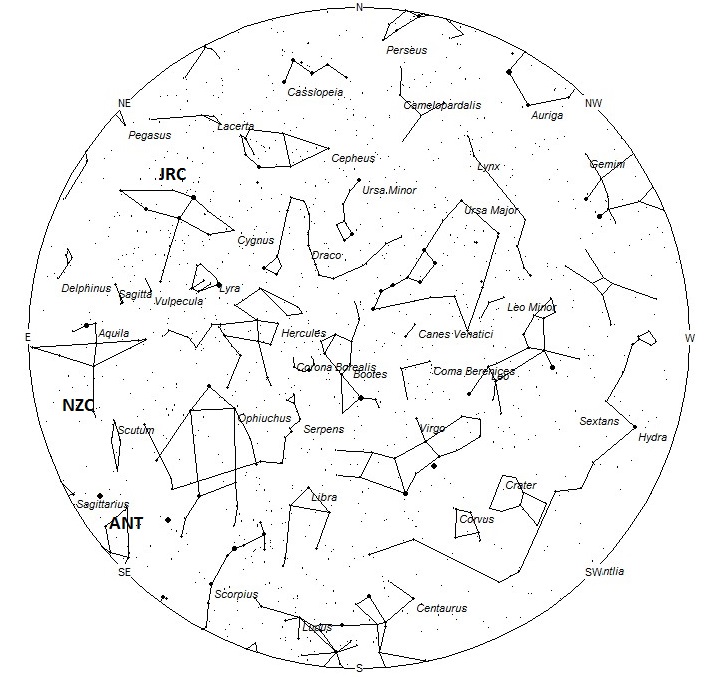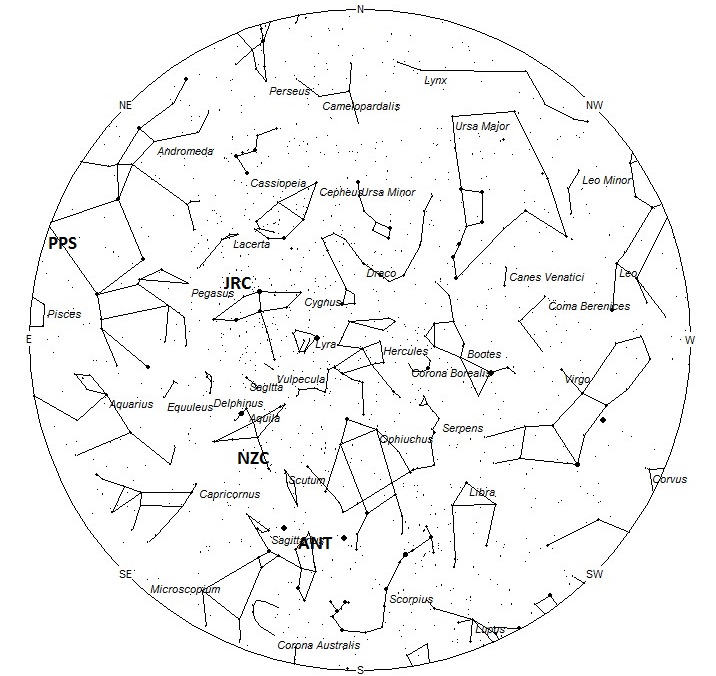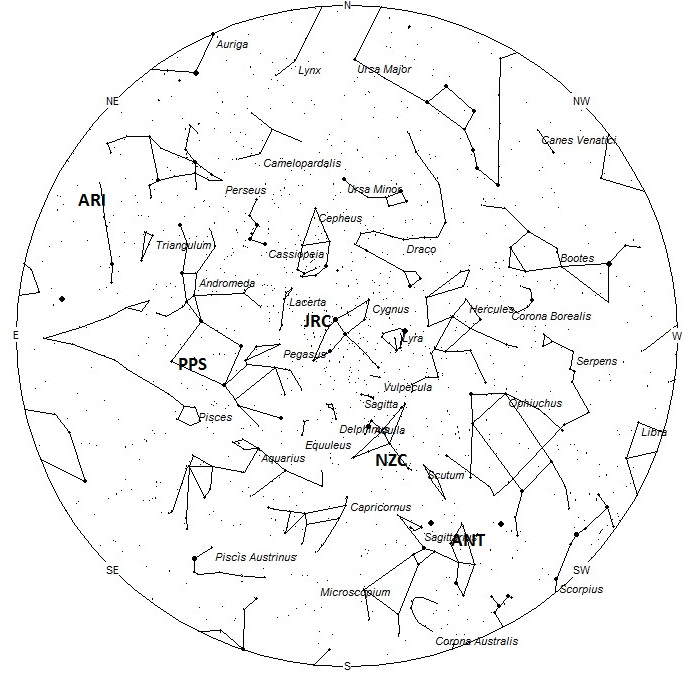
During this period the moon’s phase will wane from full down to nearly half illuminated. This will be the worst week of the month to try and view meteor activity as the bright moon remain above the horizon nearly all night long and will obscure all but the brighter meteors. The estimated total hourly meteor rates for evening observers this week is near 1 for those viewing from the northern hemisphere and 2 for those located south of the equator. For morning observers the estimated total hourly rates should be near 3 as seen from mid-northern latitudes (45N) and 5 as seen from tropical southern locations (25S). The actual rates will also depend on factors such as personal light and motion perception, local weather conditions, alertness and experience in watching meteor activity. Rates during this period are reduced due to the bright moonlight. Note that the hourly rates listed below are estimates as viewed from dark sky sites away from urban light sources. Observers viewing from urban areas will see less activity as only the brightest meteors will be visible from such locations.
The radiant (the area of the sky where meteors appear to shoot from) positions and rates listed below are exact for Saturday night/Sunday morning June 10/11. These positions do not change greatly day to day so the listed coordinates may be used during this entire period. Most star atlases (available at science stores and planetariums) will provide maps with grid lines of the celestial coordinates so that you may find out exactly where these positions are located in the sky. A planisphere or computer planetarium program is also useful in showing the sky at any time of night on any date of the year. Activity from each radiant is best seen when it is positioned highest in the sky, either due north or south along the meridian, depending on your latitude. It must be remembered that meteor activity is rarely seen at the radiant position. Rather they shoot outwards from the radiant so it is best to center your field of view so that the radiant lies at the edge and not the center. Viewing there will allow you to easily trace the path of each meteor back to the radiant (if it is a shower member) or in another direction if it is a sporadic. Meteor activity is not seen from radiants that are located far below the horizon. The positions below are listed in a west to east manner in order of right ascension (celestial longitude). The positions listed first are located further west therefore are accessible earlier in the night while those listed further down the list rise later in the night.
These sources of meteoric activity are expected to be active this week.
. Descriptions of each source will continue next week when viewing conditions are much better. .
| SHOWER | DATE OF MAXIMUM ACTIVITY | CELESTIAL POSITION | ENTRY VELOCITY | CULMINATION | HOURLY RATE | CLASS |
| RA (RA in Deg.) DEC | Km/Sec | Local Daylight Saving Time | North-South | |||
| Anthelions (ANT) | – | 18:08 (272) -23 | 30 | 02:00 | 1 – 2 | II |
| Northern June Aquilids (NZC) | Jun 17 | 19:24 (291) -07 | 41 | 03:00 | <1 – <1 | IV |
| June rho Cygnids (JRC) | Jun 15 | 21:22 (321) +45 | 48 | 05:00 | <1 – <1 | IV |
| phi Piscids (PPS) | Jul 02 | 23:48 (357) +17 | 68 | 07:00 | <1 – <1 | IV |
| Daytime Arietids (ARI) | Jun 07 | 03:08 (047) +27 | 42 | 11:00 | <1 – <1 | IV |
 American Meteor Society
American Meteor Society



On Friday, 6/10/2017, at around 8:20 PM HST (Hawaii), My wife and I with 4 other people were at the parking lot of Hawaii Camera (21°17’02.43″ N, 157°48’56.71″W) facing SSW. We saw a mag -3 green meteor heading from 45° high SE to 10° SSW at about 40° long. I saw it as 2 sections through a cloud. We thought it might be a drone falling off, but the line was just too straight.